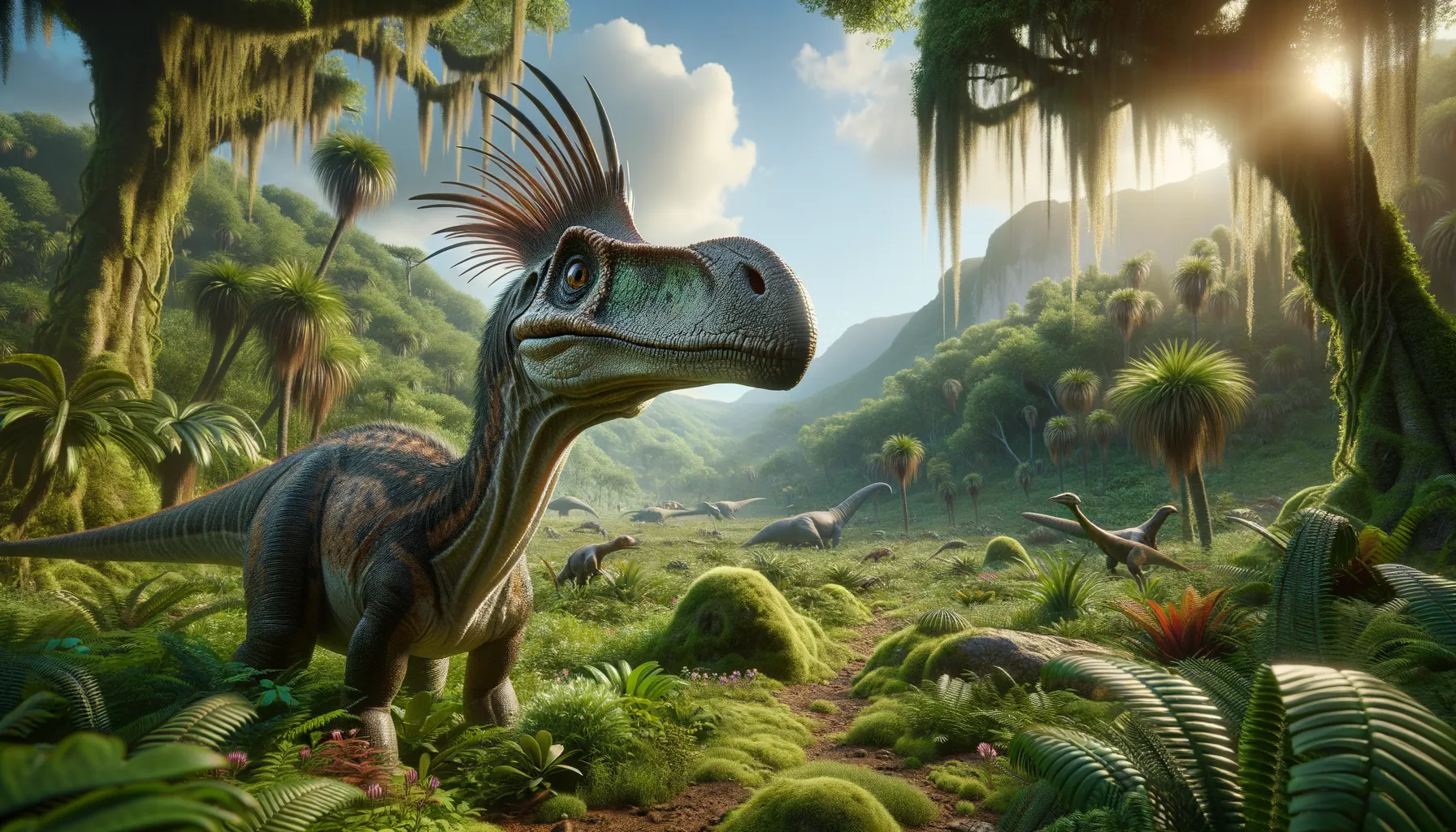
Aquilops
Eagle-faced pioneer of the horned dinosaurs.
Period
Cretaceous
Length
Roughly 2 feet long.
Height
About 1 foot tall.
Weight
Approximately 1.5 kilograms.
Aquilops was a small, horned dinosaur that lived during the Early Cretaceous period. Its name means 'eagle face' due to its beak-like snout, resembling that of an eagle. As one of the earliest ceratopsians discovered in North America, it provides insight into the evolutionary history of horned dinosaurs. Aquilops was a herbivore, feeding on the lush vegetation that thrived in its habitat during that time.
Diet
Aquilops was a herbivore, feeding primarily on ferns and other low-lying plants. Its beak-like snout was well-adapted for biting through plant material, making it a proficient grazer.
Hunting
As a herbivore, Aquilops did not hunt other animals. Its diet consisted solely of plant-based foods, gathered from the abundant greenery of its environment.
Environmental challenges
Aquilops faced challenges from predators, necessitating keen senses and possibly camouflage. It lived in an environment that experienced periodic climate changes, affecting the availability of its plant resources. These environmental shifts required adaptability to find consistent food sources.
Speed
Likely slow due to its small size.
Lifespan
Estimated to be around 10 to 20 years.
First discovery
Discovered in 1997 in the Cloverly Formation in Montana.
Fun Facts
- Aquilops is one of the oldest known ceratopsian dinosaurs, which are the same family as the famous Triceratops.
- It lived during the Early Cretaceous period, around 108 million years ago, in what is now North America.
- Despite its giant relatives, Aquilops was about the size of a large rabbit, weighing only around 3 pounds.
- Its name means 'eagle face', referring to its sharp beak shaped like that of an eagle.
- Aquilops is known primarily from a well-preserved skull, which gives scientists most of the information they have about this species.
- This dinosaur lacked the big frills and horns found in many of its ceratopsian relatives, showing that these features evolved later.
- Aquilops was likely a plant-eater, using its beak to snip at vegetation.
Growth and Development
Aquilops hatched from eggs, with juveniles undergoing rapid growth to reach maturity. Early development focused on building strength and size to better evade predators. Fossil evidence suggests they reached adult size within a few years, after which growth slowed significantly.
Habitat
Aquilops inhabited warm, lush environments filled with diverse plant life. It thrived in what are now North America’s Cretaceous river valleys and floodplains. The region supported a variety of other dinosaurs and wildlife, indicating a rich and biodiverse ecosystem.
Interaction with other species
Aquilops likely coexisted with various other small herbivorous and carnivorous dinosaurs. Its small size may have made it prey for larger predators, though this could also have fostered defensive behaviors or group living. It shared its habitat with other evolving ceratopsians, indicating potential competition for resources.
Natural lifespan
Aquilops likely had a natural lifespan of 10 to 20 years.
Reproduction
Aquilops reproduced by laying eggs, likely in nesting colonies. Parental care may have been minimal as with many other reptiles, with juveniles left to fend for themselves shortly after hatching. Clutch size and incubation periods remain speculative due to limited fossil evidence.
Social behaviour
Aquilops may have traveled in small groups, which could offer some protection against predators. Group living may also aid in locating food sources or establishing territory. However, direct evidence of social behavior in Aquilops is still largely unknown.
Fossil locations
Fossils of Aquilops are primarily found in the Cloverly Formation of Montana. These discoveries have provided significant insights into the early stages of ceratopsian evolution in North America. The find adds to the rich tapestry of faunal diversity during the Early Cretaceous.
